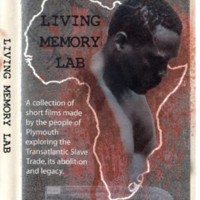
Living Memory Lab
The Living Memory Lab was a two-year project in which people from local communities of Plymouth made three-minute films on the subjects of slavery and abolition and local connections to the slave trade. A series of short training courses in basic film-making were offered as part of the project. The project was a partnership between Plymouth and District Racial Equality Council, BBC South West, the community arts agency Creative Partnerships, in collaboration with Plymouth City Museum and Art Gallery. The DVD was made freely available for use as a teaching aid and community resource.
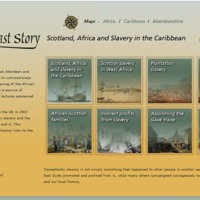
A North East Story: Scotland, Africa and Slavery in the Caribbean
This online exhibition and learning resource linking the history of transatlantic slavery to North East Scotland was organised by an Aberdeen and Aberdeenshire Bicentenary Committee, including representatives from Aberdeenshire Council, Aberdeen City Council, the University of Aberdeen, the Robert Gordon University and the African and African-Caribbean communities. It followed on from a service of commemoration and a series of public lectures sponsored by the Committee in 2007. The exhibition logo is inspired by the mythical Sankofa bird, a cultural symbol of the Akan-speaking peoples of Ghana in West Africa. Featured here are a number of resources available to download from the North East Story website.
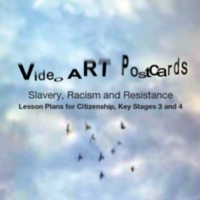
Video ART Postcards
To mark the bicentenary, Manifesta (a not for profit company delivering projects addressing cultural diversity) and the Runnymede Trust (an independent policy research organisation focusing on equality and justice) joined forces to launch a youth and digital media initiative, Video ART (Anti-Racist Trails) Postcards. The project explored connections between slavery, colonialism and contemporary issues of racism and related injustice. In the summer of 2007, two groups of teenagers aged 14-19 from the London Borough of Newham participated in workshops to uncover sites related to historical racism and anti-racism in the West India Docks area of London, assisted by video artists and historians. Using video for self-expression, each participant interpreted this history and heritage by producing a short personal video or 'postcard' - there were 33 videos in total. The videos were made available on an online resource, and a Teacher's Guide was created to be used alongside the website.
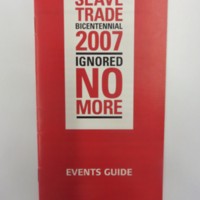
Abolition of the Slave Trade Bicentennial 2007: Ignored No More
The Greater London Authority produced an Events Guide for Londoners in 2007 detailing some of the initiatives taking place in the capital involving the Mayor. This included Africa Day on Trafalgar Square, celebrating the positive contributions of London's African communities, and 'Rise: London United', an anti-racist music festival. The conference 'Faith Symposium: In God's Name?' at City Hall examined the role of the Church in the transatlantic slave trade. There was also a seminar on the legacies of the transatlantic slave trade from a Caribbean perspective and a Caribbean Publishers Book Fair held at London Metropolitan University. The Dr Eric E. Williams Memorial Lecture Series at City Hall was made available as a webcast.
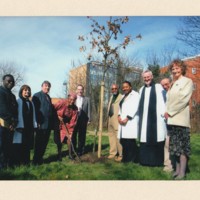
Events led by Leyton and Leytonstone Historical Society
The Leyton and Leytonstone Historical Society led a number of commemorative events to mark the bicentenary. In March 2007 an oak tree was planted in the churchyard of St John’s Church Leytonstone. At the ceremony there were a number of speeches, after which community nurse and local campaigner Mrs Zena Edmund-Charles was invited to plant the commemorative tree. There was also an art exhibition at St John's featuring artefacts and mementos of the period. A commemorative ‘Freedom Walk’ was led by local historian Peter Ashan, following a route around Leyton, Leytonstone and Walthamstow. The exhibition was shown again during Black History Month, alongside a video story of Olaudah Equiano.
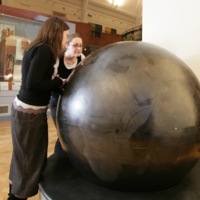
Blue Earth 1807-2007
The sculpture Blue Earth 1807-2007 by African artist Taslim Martin was permanently installed in the newly updated African Worlds Gallery at the Horniman Museum in 2007, to mark the bicentenary. The large iron globe, inscribed with the 18th century image of the slave ship Brookes, traces the routes along which enslaved Africans were transported to the New World, alongside the movement of the products of enslaved labour. The major British ports of Liverpool, London and Bristol are depicted, as well as ports in West Africa and some of the destination ports in North America, the Caribbean and South America. Visitors are encouraged to spin the globe to view slave routes across the world. In 2007-2008, the Horniman Museum also hosted 'La Bouche du Roi' by Romuald Hazoumé.
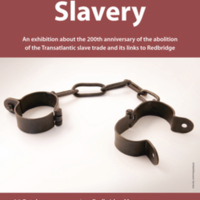
Redbridge and Slavery
Redbridge Museum's exhibition to mark the bicentenary examined the London Borough of Redbridge's connections to the slave trade and abolition. These links included local resident Josiah Child, once Governor of the East India Company, an investor in the Royal African Company and owner of plantations in Jamaica. The Mellish family of Woodford had connections with the West India Docks in London, built for the sugar trade. Alexander Stewart of Woodford owned Jamaican plantations and acted on behalf of owners of enslaved Africans in compensation claims after abolition. The exhibition also examined church records detailing some of the Black residents of Redbridge in the 17th and 18th centuries. Music from the Caribbean island of Dominica was included, as was a series of personal responses to the bicentenary by local residents.
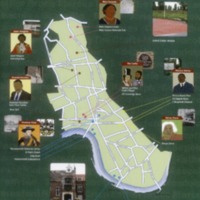
Remembering Slavery in Hammersmith and Fulham
Hammersmith and Fulham Urban Studies Centre is a voluntary educational organisation which offers opportunities to children and young people to learn about the local urban environment. The online curriculum resource 'Remembering Slavery' aimed to inform teaching and learning about the transatlantic slave trade by tracing the links of people and places in Hammersmith and Fulham to enslavement, the slave trade and its abolition. It explored the lives of enslaved Africans and their descendants, detailing their experiences and contributions in the local area. The resource aimed to encourage teachers to develop a locally-based Black history focus across curriculum programmes. It consisted of resource guides and animated films across four broad time frames: pre-Victorian, Victorians, Britain in the 1930s and 40s, and Britain since 1948.
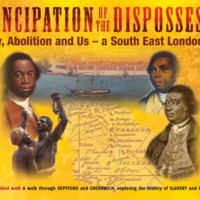
Emancipation of the Dispossessed: Slavery, Abolition and Us - a South East London angle
Emancipation of the Dispossessed was a local community project exploring the local history of Deptford and the surrounding areas and the connections with the transatlantic slave trade. Community groups and students from Lewisham College worked with theatre educators to research and develop 'Blood Sugar', a promenade performance through the Queen's House, Greenwich. The play, written and directed by John Turner, tells the story of slavery and abolition from a local angle, and the script was built around first-hand and eyewitness accounts, campaign pamphlets and reports to parliament. The project also produced learning resources aimed at Key Stage 3 History and Citizenship.
A guided walk explored Deptford’s links to the history of the transatlantic slave trade, uncovering stories of some of the local people who played an important role in the beginnings of the slave trade or the campaign for its abolition. London was an important slave trading port before Bristol and Liverpool dominated the trade. The trade and British colonies were protected by the Royal Navy, whose ships were built and prepared for voyages at the Royal Dockyards at Deptford.
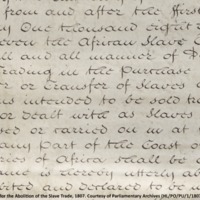
Inhuman Traffic: The Business of the Slave Trade
An exhibition at the British Museum exploring how the transatlantic slave trade functioned. The display examined the commodities involved - tobacco, guns, textiles, sugar, rum - and the ways in which Africa, Europe and the Americas were linked in a global trade network. The exhibition also looked at resistance leaders including Toussaint L'Ouverture, Olaudah Equiano and Nanny of the Maroons, and their struggles to end enslavement. The exhibition was accompanied by a varied public programme at the museum exploring the legacy of the slave trade as part of the Atlantic Trade and Identity season, featuring film screenings, panel discussions, seminars and lectures.
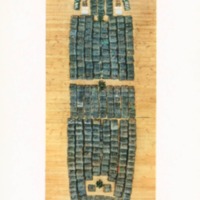
La Bouche du Roi
La Bouche du Roi was created by artist Romauld Hazoumé, who lives and work in the Republic of Benin, West Africa. The multi-media artwork is named after a place on the coast of Benin from where enslaved Africans were transported. It comprised 304 plastic petrol can 'masks', each representing a person, arranged in the shape of the woodcut of the Liverpool slave ship Brookes. The aroma of tobacco and spices are represented alongside the terrible smells of a slave ship. The artwork was accompanied by a film showing the motorcyclists who transport petrol illegally between Nigeria and the Republic of Benin. The cans and motorcyclists are metaphors for modern forms of enslavement and resistance. First exhibited at the British Museum in London, La Bouche du Roi toured to the following venues during 2007-9: Ferens Art Gallery in Hull, International Slavery Museum in Liverpool, Bristol's City Museum and Art Gallery, Laing Art Gallery in Newcastle, and the Horniman Museum in London.
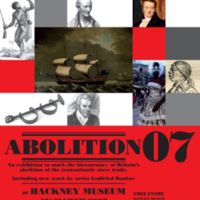
Abolition 07
Hackney Museum's Abolition 07 exhibition told the story of British involvement in the transatlantic slave trade, the resistance to it, and its abolition, and in particular emphasised the involvement of Hackney's residents in the abolition movement. The display included new artwork by Godfried Donkor in collaboration with young Hackney artists. A film of interviews with Hackney residents, Hear My Voice, was produced. Over 1200 children from Hackney Primary Schools took part in poetry workshops at the museum with poets Adisa and Baden Prince. Their poems and responses were published in the booklet 'And Still I Rise'.
The research into Hackney's connections to the transatlantic slave trade continued in 2013-2015 with 'Local Roots / Global Routes', a collaborative project between Hackney Museum and Archives and the Legacies of British Slave-ownership project.
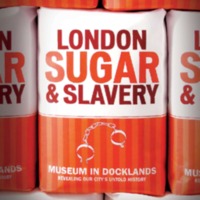
London, Sugar and Slavery
The Museum of London Docklands opened the London, Sugar and Slavery gallery in 2007, and it remains a permanent exhibition. The museum, housed in an old sugar warehouse on London’s West India Dock, retold the narrative of the transatlantic slave trade from the perspective of London, once the fourth largest slaving port in the world. Through personal accounts, film, music, interactive exhibits and over 140 objects, the exhibition looks at the various stages of the transatlantic slave trade, including life and trade on the West India Dock, and conditions for the enslaved on the Middle Passage and the Caribbean plantations. The final section of the gallery focuses on the legacies of the slave trade for British society today. Community collaborations also helped shape the gallery.
The museum also created a walking trail for the local area, highlighting key architectural features and buildings that had a role in the transatlantic slave trade. The Slave Map of London was developed in collaboration with three London museums: the Cuming Museum in Southwark, Bruce Castle Museum in Haringey and Fulham Palace Museum. Users navigated an online map to discover over 100 different locations throughout London which played a part in the transatlantic slave trade and the fight to end it. A schools programme that accompanied the opening of the exhibition included drama performances and workshops. Courses that ran alongside the exhibition in 2007 included ‘Resistance and Achievement: the story of African and Caribbean people in Britain’, in partnership with Middlesex University.
In 2018, the museum reflected on the 10 year anniversary of London, Sugar and Slavery with a workshop to explore the significance of the gallery, with contributions from artists, museum practitioners and emerging artists.
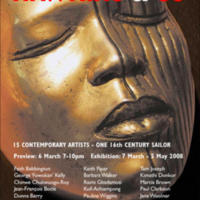
Hawkins & Co
Curated by artist Kimathi Donkor, and first exhibited at London’s Elspeth Kyle Gallery, Hawkins & Co referred to the Elizabethan mariner Sir John Hawkins, whose 16th century voyages to Africa and the Caribbean pioneered the British slave trade. In 2008, an expanded version of the project, featuring over 70 artworks from 15 contemporary artists, was exhibited at Liverpool’s Contemporary Urban Centre. The display included artworks by Keith Piper, Barbara Walker and Raimi Gbadamosi, and a new commission from Jean-François Boclé. Each piece on show explored a different aspect of the culture and history of the transatlantic African-Caribbean diaspora affected by Hawkins’ legacy.
In 2017, a key work from the project - 'UK Diaspora' - was added to the permanent collections of the International Slavery Museum.
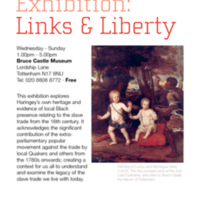
Links and Liberty
An exhibition at Bruce Castle Museum (in partnership with Euroart Studios) explored the transatlantic slave trade, Haringey's heritage relating to the trade and its legacy, and the historic Black presence in the borough from the 16th century onwards. There was a particular focus on the painting of Lucius and Montague Hare, sons of Lord Coleraine (former owner of Bruce Castle), with their African servant. The exhibition also looked at the extra-parliamentary popular movement against the trade by local Quakers such as Priscilla Wakefield and others. Contemporary dance workshops for secondary schools were led by dance company Movement Angol.
The Links and Liberty exhibition included 'Stolen', a life-size installation by artists at Euroart Studios (John Fowler, Lorraine Clarke and Nigel Young) of a section of a slave ship. School pupils were encouraged to climb inside to imagine conditions on board.
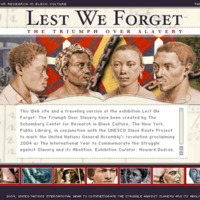
Lest We Forget: The Triumph Over Slavery
Lest We Forget is a travelling exhibition commissioned by UNESCO (United Nations Educational, Scientific and Cultural Organisation) and created by The Schomburg Center for Research in Black Culture, The New York Public Library, and the UNESCO Slave Route Project. It toured several countries in Africa, Europe and North America before arriving in Camden. The exhibition was on display in Swiss Cottage Gallery, Swiss Cottage Central Library in May 2007. It focused less on enslaved Africans as victims and more on the ways in which they reshaped their place in history through the creation of distinct cultural contributions, including language, religion, music and institutions. Swiss Cottage Library also held poetry and discussion events to mark Black History Month in October 2007.
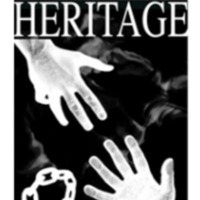
Dark Heritage
Dark Heritage from Bee Arts Community Interest Company comprised The DARK, a sonic art installation, and accompanying participatory educational activities. The DARK touring installation is a pitch black space designed to bring home the horrors of the transatlantic slave trade in the 18th century. The three dimensional soundscape uses ghosts as metaphors for the hidden aspects of the past, based on the Liverpudlian slave-ship worker Edward Rushton, slave ship Captain John Newton, and Kunie, an African man who met Rushton aboard an American ship. A programme of public sessions and creative educational workshops aimed at schools, colleges, youth and community groups were produced in collaboration with Kingswood Primary School in Lambeth. Dark Heritage travelled to six locations in the UK in 2007-08 starting in Greenwich, travelling to Ipswich, Gloucester, University of Hertfordshire, Norwich and finishing in Manchester.
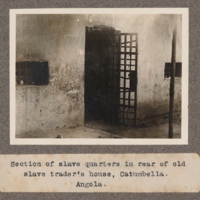
Section of slave quarters in the rear of old slave trader's house, Catumbella. Angola.
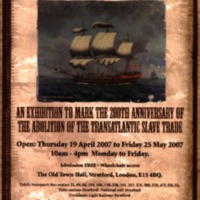
The Wickedest of Cargoes
London Borough of Newham Council led “The Wickedest of Cargoes…”, an exhibition at Stratford Town Hall, which used local museum and archive collections to explore the history of the slave trade and abolition. It looked at the history of slavery through different societies and cultures, and especially the Barbary pirates who enslaved seamen and passengers from ships on the west coast of North Africa. The exhibition explored the transatlantic slave trade and its abolition from a local perspective, focusing on the large Quaker community in West Ham and, in particular, John Fothergill and Samuel Gurney. Newham has many residents from an African Caribbean background, who were consulted in the development of the exhibition. Addressing the legacies of slavery, the exhibition looked at the rising Black population of the borough through history and the importance of the Coloured Men’s Institute in Canning Town, set up as a place where Black families could meet.
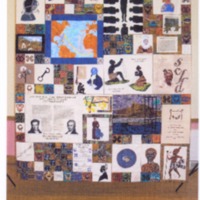
In Stitches
The In Stitches project was led by the African Families Foundation (TAFF) and brought together British, African and African-Caribbean women's quilting groups meeting in London, Liverpool, Bristol, Manchester and Birmingham. The In Stitches Quilt, designed by Janice Gunner, included 60 squares of embroidered images, texts and symbols, depicting historic figures, scenes and artefacts associated with the transatlantic slave trade and its abolition. The Quilt used several of the Adinkra symbols from Africa, originally printed on fabrics worn at funerals by the Akan peoples of Ghana. The accompanying work pack was designed to support learning about slavery based on the four themes of the Quilt: Capture, the Middle Passage, Life in the 'New World', and Proscription of Slavery. The Quilt was unveiled at City Hall in London, and then toured to the British Empire and Commonwealth Museum (Bristol), Central Library (Liverpool), Soho House (Birmingham), the International Quilt Festival (Birmingham) and Central Library (Manchester).